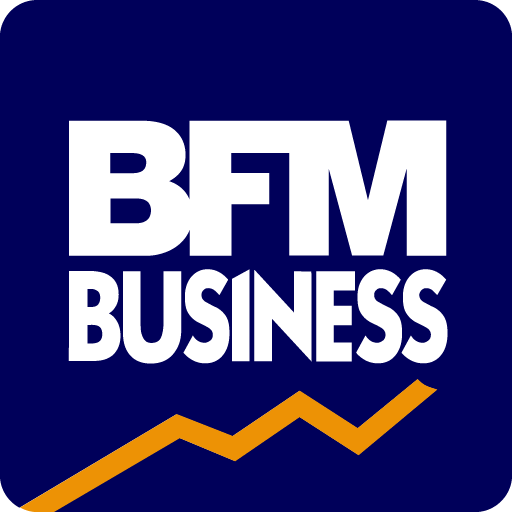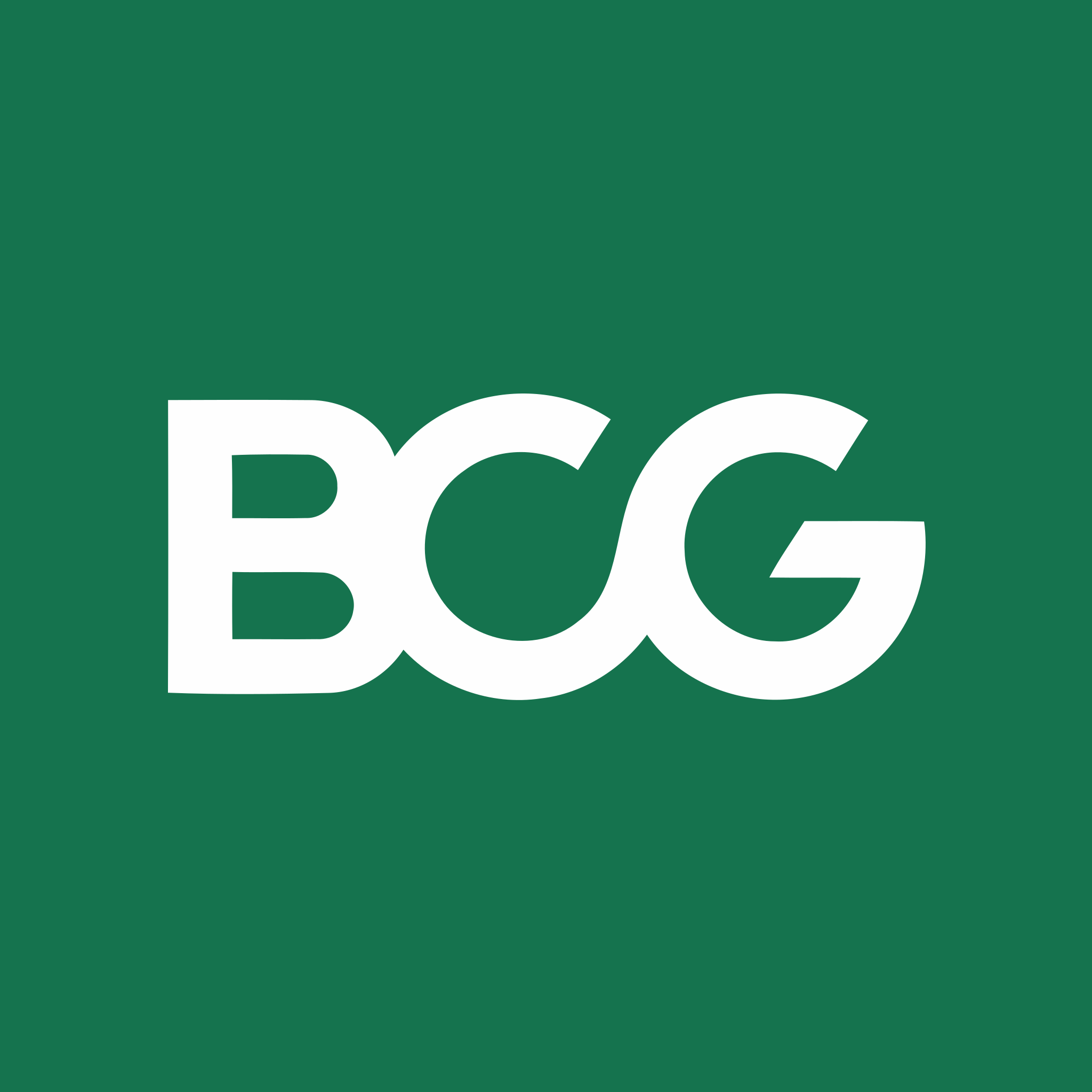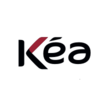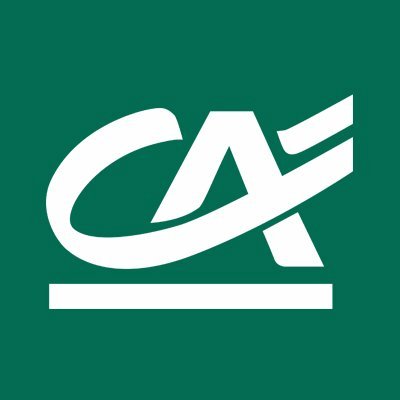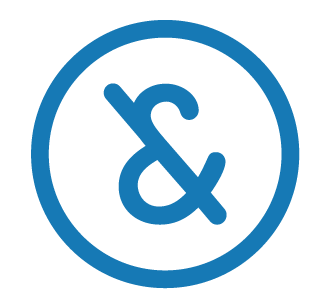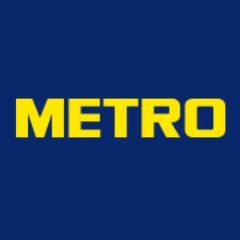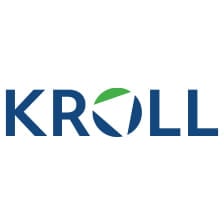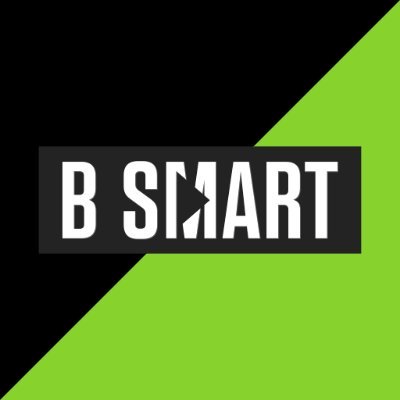Summary of our market study
French SaaS (Software as a Service) market estimated at $7 billion
The global SaaS (Software as a Service) market is estimated at nearly $300 billion. It is expected to continue growing at a rate of 20% per year.
Growth drivers include the widespread adoption of mobile devices, artificial intelligence and cloud computing.
The European SaaS market is expected to reach €56 billion by 2022.
The French market for cloud solutions is expected to exceed 27 billion euros by 2025. SaaS accounts for 50% of software publishers' sales.
SaaS products apply to messaging, CRM and human resources management.
A significant proportion of SaaS sales (81%) come from the private sector, particularly large corporations.
Small and medium-sized enterprises (SMEs) have a lower-than-average adoption rate of SaaS solutions.
Around 30% of French companies use cloud computing solutions, compared with the European average of 40%.
The subscription model seems to be the favorite of software publishers and customers alike, with 70% of companies preferring this contractual arrangement.
SaaS player.
- Microsoft: A major player in the sector
- IBM
- Oracle
- ADP: Traditionally known for its payroll services
- Salesforce: CRM giant
- SAGE: Focused on accounting and financial management, SAGE has made considerable progress in its transition to the cloud.
- Cegedim: Specializing in the healthcare sector, Cegedim offers a variety of SaaS solutions
- Sopra Steria
to understand this market
Detailed content of our market study
 Inforamtion
Inforamtion
- Number of pages : 35 pages
- Format : Digital and PDF versions
- Last update :
 Summary and extracts
Summary and extracts
1 Market overview
1.1 Market definition
SaaS - "software as a service" - is a new software distribution model. Two characteristics distinguish SaaS from traditional software: remote use and price.
In the case of traditional software, it is used as a physical product, of which the user acquires definitive ownership on purchase. The purchase of the Office Family Pack is a typical example of this first type of software.
SaaS, on the other hand, is used remotely, with variable pricing. According to GartnersaaS can be defined as "an application that is owned, offered and managed by one or more vendors. The provider offers this application on the basis of a set of codes and definitions relating to the data used, based on a "one-to-many" model. one-to-many " model, with revenues indexed to frequency of use or generated on a subscription basis. Salesforce and SAP are among the best-known and most widely used examples. SaaS is therefore not used as physical software, but as virtual software used as a service through the cloud.
However, understanding the SaaS market remains variable, given the complexity of the services offered by software publishers.
Two approaches are possible:
- SaaS is seen as a software product in its own right, meeting a specific business need, such as human resources management. SaaS is then an integral part of the cloud computing system.
- When it comes to marketing, SaaS is seen as an IT solution that can be marketed in the same way as hardware (a computer) or a service (consulting, for example), but as a subscription rather than an acquisition.
In the first approach, SaaS is the ultimate pillar of the three elements used by cloud computing. The aim of cloud computing is to make computing or storage capacity available to users, whether private or public, remotely. SaaS thus complements the other two pillars of cloud computing. The first is infrastructure - or "IaaS" (Infrastructure as a Service) - which is required to set up a remote network. The second, the platform - or "PaaS" (Platform as a service) - enabling the establishment of a dedicated environment for hosting the software that SaaS represents.
From this perspective, SaaS is the heir to application services, known as ASP (Application Service Provider). SaaS orchestrated a fundamental difference from its predecessor, whose principle was to install and use applications directly on a computer. By revolutionizing the use of applications via the Internet, SaaS has not only changed the way applications are used - the main benefit of which lies in their remote use - but also the possibilities for integration and partnership.
From a commercial point of view, SaaS is integrated into the software segment, and is therefore one of the three traditional segments of the IT industry, alongside hardware (i.e. computer, mobile) and software.i.e. computer, mobile) and services (i.e. management consulting and database integration). The software segment covers networking, development and usage applications. These applications are either physical (traditional software) or remote (SaaS).
SaaS is designed for both private and professional use. In this context of professional use, SaaS supports companies across the entire value chain. Several categories of software are commonly distinguished:
- Enterprise resource management (e.g. accounting, suppliers). This software is known as ERP - Enterprise Resource Planning;
- Customer relationship management (e.g.: relationship history). These are known as CRM - Customer Relationship Management;
- Product management (e.g. after-sales service, localization). These are known as PLM - Product Lifecycle Management;
- Office automation (e.g. spreadsheets);
- Design (e.g. computer-aided manufacturing).
By 2021, 45% of software sales will be generated by SaaS. This percentage is set to increase at the expense of traditional software, for a variety of reasons (lower cost, more practical, etc.).
1.2 A fast-growing global market
evolution of worldwide SaaS revenues World, **** - ****, in billions of dollars
The global SaaS market is estimated at $***.** billion in ****, and is expected to grow at a CAGR of **.*% over the period ****-****, reaching over $**** billion by the end of this period. The growing use of mobile devices and artificial intelligence are among the main factors driving market growth, but the competitive environment is also a growth driver for this market: companies need to adopt cost-effective solutions to "reorganize their business model".
The advent of the digital age and the acceleration of the customer experience are further determinants of the sector's strong future growth.
In addition,the shift towards greater customization of software and business services by industry specialists (***) now brings real added value in terms of flexibility of use compared with the use of traditional physical software.
Focus on the European market
Knowing the size of the French SaaS market (***) and its share of the European market, we can easily calculate the size of the latter: * * *** / **.* = **
The European SaaS market will therefore be worth ** billion euros in ****. It is dominated by the UK, Germany and France. The market breakdown is as follows:
SaaS market share breakdown Europe, ****, in Source: ****
Despite ...
1.3 The French market: a dynamic market with great potential
The SaaS model, a segment of the software market, is growing in popularity in France. In ****, **% of software sales will be generated by SaaS, whereas in ****, this segment represented only **%[***].
The market for SaaS solutions France, **** - ****, in billions of euros Source: ****
The French SaaS market has been enjoying sustained growth since ****, with a clear acceleration from **** onwards to reach record sales of * billion euros in ****.
In terms of SaaS transactions, France was the second most active market in **** behind the UK, with **% of the total volume of transactions carried out in Europe (***). [***]
2 Demand analysis
2.1 Large companies, the main customers
Demand driven by industry, the public sector and finance
As the SaaS market's main outlet, the private sector (***) represents the main development opportunity for software suppliers. From the outset, SaaS software has been designed to optimize and facilitate the management of day-to-day business activities, such as accounting and product management.
Breakdown of SaaS market sales, by sector France, ****, in https://www.blog-idcfrance.com/idc-info-le-marche-du-saas-en-france/
More recently, the customization of services and analysis software has been the main development proposed by publishers. Although the healthcare and education sectors have lagged behind in the use of such software to date, they are nevertheless pioneers in the use of these applications within public institutions. Indeed, SaaS use in the healthcare sector has increased by **%[***]. Until now, private demand has been polarized between large companies (***), where the penetration rate of SaaS solutions is three times higher than average.
The French market also stands out for the fact that French SMEs use SaaS less than the European average. In this respect, France stands out from its European neighbors. Even though large companies use more storage and hosting software, the difference with SMEs is less marked than in France.
2.2 Demand driven by the democratization of cloud computing
First and foremost, this democratization requires high cloud software penetration rates. Certain sectors are more or less sensitive to the use of this type of software, but overall penetration rates are significant:
Office cloud software penetration rates by sector France, ****, in % of companies INSEE
in the transportation sector, for example, the penetration rate of office automation cloud software reached **% in ****. This phenomenon may explain some of the growth in the cloud solutions market, which is set to double in size between **** and ****:
Cloud solutions market trend France, **** - ****, in billions of euros Source: ****
*forecast
It is estimated that the French market for cloud solutions and services could reach over ** billion euros by ****. This current and future growth will largely benefit the SaaS market. A significant part of this growth can be attributed to the increase in the proportion of French companies using this type of service. The graph below describes this dynamic:
Trend in the proportion of companies using cloud solutions France, **** - ****, in Source: ****
Cloud computing is winning over a growing number of French companies: **% of them were using cloud solutions in ****. This figure may seem high, but it needs to be qualified when put into perspective with statistics ...
2.3 SaaS: an internationalized service
A large proportion of software publishers' sales, **% of which are generated by SaaS solutions, are generated abroad:
Breakdown of software sales by geographic region World, ****, in Source: ****
Indeed, foreign sales account for **% of the total, down slightly from **% the previous year. This proportion has remained relatively stable over the past five years. In ****, the proportion of sales generated abroad exceeded the **% threshold for the first time, reaching **%.
However, this international presence is highly dependent on the company's sales:
Breakdown of sales by sales volume France, **** Source: ****
There is a clear correlation between a company's internationalization and its sales. Smaller publishers will tend to concentrate on their domestic market, while larger ones will find internationalization an attractive growth lever. For example, publishers with sales in excess of €*** million generate an average of **% of their sales abroad, compared with **% for publishers with sales of less than €* million.
2.4 Demand drivers: the subscription contracting method
As explained earlier, one of the advantages of the SaaS model is economic. Indeed, the subscription format appeals not only to customers, but also to publishers. This explains the resilience of the SaaS market during the pandemic.
Software publishers' preferred method of contractualization France, ****, in Source: ****
In fact, **% of the *** software companies surveyed said they preferred subscription-based contracts. And yet, the SaaS model is largely subscription-based.the advantages of this model are twofold: on the customer side, it confers a high degree of flexibility (***), and on the publisher side, it offers regular revenues. Subscriptions are likely to attract even more software publishers in the future:
[***] Publishers' preferred method of contractualization in the future France, ****, in Source: ****
**% of the *** companies surveyed would like to see subscription-based solutions in the future. Once again, this figure is in line with the widespread adoption of SaaS in France, insofar as subscriptions generally go hand in hand with SaaS. What's more, the duration of these subscriptions is generally relatively long, testifying to customer loyalty to the SaaS model:
Average duration of SaaS software subscriptions France, ****, in Source: ****
In France, software publishers are successfully persuading their customers to commit to long-term subscriptions. Indeed, **% of publishers ...
2.5 Demand drivers: customer relationship management (CRM)
Customer relationship management is part of a policy of mastering customer knowledge and monitoring customer exchanges. While the latest software products combine these two practices, there are also contact centers that make the most of the data they collect, and support their customers in their decision-making thanks to steering tools, key indicators, tracking curves and predictive analyses.
Tracking exchanges with contact centers: outsourcing the process
Outsourcers make the most of the data they collect, and develop their consulting and support services for customers. Outsourcers are now able to provide their customers with steering and decision-making tools, including key indicators, tracking curves, predictive analyses...
Contact center sales France, ****-****, billions of euros Source: ****
The French market for outsourced customer relations is estimated at *.** billion euros in ****, showing growth of **.*% compared to ****. In the same year, France ranked *st in the French outsourced customer relations market. [***]
The drivers of this acceleration include
very strong growth in the e-commerce sector, requiring efficient remote management of customer relations the growing outsourcing trend among small and medium-sized businesses. the increasing use of outsourcers' expertise in customer relationship management: we are witnessing a rise in the share of consulting in contact center activity
SaaS CRM favored over ...
2.6 Barriers to SaaS demand
As SaaS solutions are not perfect, it's important to point out the few drawbacks of this model that are likely to dampen demand. These include[***]:
the need for a good Internet connection: no offline use, so the company is entirely dependent on the quality of the connection; strong dependence on the SaaS service provider: if the provider goes bankrupt, there's no software left; security can be a problem when solutions are used on mobile or tablet devices, and on unprotected networks; lack of customer control over server location; saaS software is often specific, which means that you need to adopt several solutions, and possibly spend a lot of money on them.
3 Market structure
3.1 SaaS market value chain
Source: ****
3.2 The software market: a fast-growing market
A first positive sign for the SaaS market is that software publishers' sales are rising sharply, which testifies to the dynamism of demand on the software market (***):
Trend in total sales for software publishers France, **** - ****, in billions of euros Source: ****
The software market has indeed seen significant growth since ****, with total sales reaching **.* billion euros in ****. Growth rates for individual companies are as follows:
Sales growth for software publishers France, ****, in Source: ****
Over **% of the *** companies surveyed achieved double-digit growth in ****, confirming the potential of the SaaS market, given that **% of these companies' sales come from this segment.
Indeed, the share of SaaS in software sales has been growing steadily since ****, which, once again and not least, points to sustained growth for this segment in the years ahead.
Share of SaaS sales in the software market France, **** - ****, in Source: ****
In just three years, the share of SaaS sales has risen by six percentage points. This rapid rise testifies to software publishers' growing attraction to, and adoption of, the SaaS format. What's more, there will be a marked increase in the number of employees in the software sector between **** and ****:
Workforce trends in the software industry France, **** - ****, in thousands Source: ...
3.3 A segmented software market
Among software publishers, it is possible to distinguish between sector-based publishers (***) and individuals and games, representing a very small share of the publishing market. The breakdown of players in the software publishing market is as follows:
Sales by publisher category France, ****, in billions of euros Source: ****
Sector-specific publishers are the biggest contributors to market sales, with a total of **.* billion euros. This category also includes the largest number of companies, with *** publishers versus *** for horizontal publishers. In ****, both sector and horizontal publishers achieved high sales growth rates, with **% and **% respectively.
3.4 R&D, cybersecurity, CSR, recruitment, external growth and distribution: current market challenges
Research and development
Innovation is a top priority for French software publishers, as evidenced by their significant investment in research and development (***). Indeed, they devote **% of their sales to R&D, and a third of their total workforce is dedicated to these activities:
Evolution of R&D workforce as a percentage of total workforce France, **** - ****, in Source: ****
What's more, the proportion of sales allocated to R&D by pure-play software publishers is higher in companies with sales of less than €** million than in those with higher sales (***). Smaller companies therefore seem to make greater R&D efforts than larger ones.
Cybersecurity
Security is also one of the main challenges facing the software market, and hence the SaaS market. This technological priority is the first choice of **% of software publishers, just behind the priority of developing cloud/SaaS (***).
Software publishers' technological priorities France, ****, in Source: ****
It's worth noting that the development of cloud/SaaS solutions is the top priority for software publishers. They are well aware of the market potential of this software segment.
CSR
CSR is an issue common to all companies in the **st century, and it also concerns software publishers, and therefore the SaaS market. By ****, **% of CSR ...
3.5 Interview with Alex Delivet, founder of Collect
Marine: Welcome to the Niche, the podcast that analyzes the niche market with the entrepreneurs who are shaking things up. I'm Marine and I work at Businesscoot, the start-up that's dusting off market research. Before you start, subscribe to our podcast on Spotify and Apple Podcast. And now for today's niche: the SaaS or Software as a Service market. For this, I'm joined by Alex Delivet, founder of Collect and host of the SaaS Connection podcast, hello Alex.
Alex : Hello Marine.
Marine: Thank you very much for accepting our invitation to start this episode. I'll let you tell us a bit about Collect and your podcast, SaaS Connection.
Alex: Okay, so Collect is a SaaS that allows companies to request documents or information from their customers, usually at the start of a collaboration. In fact, we'll come and list everything we need to retrieve, and then we'll create a customer portal to retrieve all this information and automate certain processes linked to this retrieval. So that's my day job, and in parallel to that, I'm doing a podcast called SaaS connection.
It'sa podcast dedicated to the world of SaaS, in which I interview a number of key players in the SaaS ...
4 Offer analysis
4.1 From product price to service price
SaaS implies a new way of pricing
In their ADP versions, software followed a traditional pricing logic: the software end-user paid a fixed price upon acquisition.
The development of the cloud has brought about a fundamental shift in software pricing, for two reasons.
Firstly, the flexibility, scale and interaction offered by the cloud have, in many cases, rendered the application of a single tariff obsolete. Secondly, from a purely financial point of view, customized pricing represents a double opportunity. For the supplier, it is a means of smoothing out the revenues generated by the marketing of a product over time. For the customer, it's a way of using a service at a lower price and with less commitment than for a product.
There are * pricing models for SaaS software
From this perspective, four SaaS pricing schemes can be distinguished:
A license price, corresponding to the right to install on a machine. A price indexed to software use, where the indexed variable may be the number of hours of use, or the number of products on which the software is installed. A subscription-based price, i.e. giving access to a certain number of functions and services (***), usually on a monthly basis. Prices ...
4.2 A protean SaaS software offering
It's important to differentiate between the three layers of service offerings that can coexist today:
IaaS (***): basic infrastructure in the form of computing, storage and bandwidth capacity. It's an offer aimed at businesses, but above all at application service providers. Amazon Web Services is typical of this category, with its offer of storage and virtual servers that can be rented. PaaS (***) : these are platforms for developing, testing and operating applications. The PaaS provider operates the underlying infrastructure, which is transparent to the customer. This is an offer aimed at developers and publishers. One example is Salesforce's Force.com offering, which enables applications to be developed around its CRM software. SaaS (***): these are application services aimed at end-users, which can be directly grafted onto the system.
Today, SaaS applications cover a wide functional spectrum, from messaging and collaboration services to human resources management. Web conferencing and virtual conferencing solutions are also booming, particularly since the health crisis. The development of these solutions also raises issues related to document sharing, data processing and transfer, etc.
.
4.3 SaaS software offerings and inflation
The SaaS market is no exception to the high inflation experienced by French consumers over the past two years. **.**% of SaaS software increased its price between **** and ****.
SaaS price increases by subscription type France, **** - ****, as % of total Source: ****
Software prices rose by over *% on average between **** and ****, slightly more than overall inflation. However, SaaS software prices have not all risen in the same proportions: depending on the category, there have been greater or lesser increases. The chart below describes the SaaS software categories whose prices have risen the most:
Software categories with the highest price increases France, **** - ****, as % of total Source: ****
Expense management software saw the most drastic price rise, with an increase of **.*%. It should be noted that **.**% of price increases concern both existing and new customers, while **.**% concern new customers only.
In addition to inflation, software publishers tend to modify their prices on a very regular basis. Pricing strategy is of great importance in the SaaS market. With a wide range of products on offer, software publishers are testing each other by frequently modifying their prices.
Frequency of SaaS software price changes France, ****, in Source: ****
As a result, **% of SaaS software vendors change their prices at least ...
5 Regulations
5.1 Regulations governing SaaS
As a processor of its customer's personal data, the SaaS software publisher has a great many obligations with regard to Regulation EU ****/*** of the European Parliamenten and of the Council of April **, **** on the protection of individuals with regard to the processing of personal data and on the free movement of such data.
According to the European Data Protection Directive of ****, replaced by the General Data Protection Regulation (***) is prohibited unless certain conditions are met. By transfer, the directive implies that data will be processed in some way in a country outside the EEA; however, transit of data via these countries is authorized. The Directive defines personal data as "any information relating to an identified or identifiable natural person". This broad definition can encompass a variety of information about an individual, such as name, address, IP address or credit card details.
The contract between a SaaS software publisher and its customer must include several specific stipulations concerning the processing of personal data. According to Article ** of the RGPD, this contract must stipulate that the processor only processes such data on the documented instruction of the controller, including for data transfers to a third country. It must also ensure that any person ...
6 Positioning the players
6.1 Segmentation
The SaaS market can be divided into three categories:
Leaders. This group brings together the market's historical players, who developed the first computerized management solutions for businesses from the ****s onwards, and have gradually made their offerings more complex. Most of these companies are American, and offer generalist services. Adapting their software to different stages of the value chain enables them to benefit from synergies in the distribution of their software and thus position themselves as central players in the variety of sectors where software is now applicable. These companies include Microsoft, IBM, Oracle and ADP. Specialists. This category groups together national champions - American, British, German or French - who have distinguished themselves by offering solutions specific to a business function (***). These include Dassault Systèmes, Lectra, Talend, Sopra Steria, Cegedim, SAGE, Salesforce and Amadeus New entrants. These companies specialize in specific market segments, but offer integrated solutions and benefit from a product approach that is easier to develop, more efficient and easier to understand in day-to-day management, particularly in terms of pricing. This category includes Algolia, Citrix and Doctolib. These companies are the main destinations for capital converging on the SaaS market.
6.2 Summary of key points
The French SaaS market has experiencedsustained growth since ****, with a clear acceleration from **** onwardsto reach record sales of* billion in ****, compared with *.* billion in **** and *.* billion in ****.
Demand
Lhe private sector accounted for **% of Saas sales in ****. Industry (***) are the main private-sector outlets. The public sector accounts for **% of demand.
The SaaS market benefits from an environment that is conducive to its development. Indeed, the proportion of companies using cloud computing solutions is rising steadily (***)
In fact,cloud solutions are increasingly favored over traditional company-owned software. By ****, the cloud solutions market in France is expected to grow by *.* billion euros to **.* billion euros. CRM tools are among the most promising SaaS software in terms of growth.
CRM tools are also driving SaaS demand. **% of CRM software worldwide is in SaaS format. In France, in ****, **% of companies using CRM software had already adopted SaaS solutions, and **% planned to adopt them in the near future.
Market players/structure
The market is driven by three main entities: cloud infrastructure providers (***).
What's more, **% of software sales in France will be generated by the SaaS segment in ****whereas in ****, this segment represented only **% [***]. France is currently the third most dynamic SaaS market in Europe, after the ...
- Cegedim
- IBM
- Oracle
- ADP LLC
- Sopra Steria
- Citrix
- Algolia
- Talend
- Sage
- XEFI
- Aircall
- SAP
- Atos
- Microsoft
All our studies are available online in PDF format
Take a look at an example of our research on another market!
 Choosing this study means :
Choosing this study means :
Access to more than 35 hours of work
Our studies are the result of over 35 hours of research and analysis. Using our studies allows you to devote more time and added value to your projects.
Benefit from 6 years' experience and over 1,500 industry reports already produced
Our expertise enables us to produce comprehensive studies in all sectors, including niche and emerging markets.
Our know-how and methodology enable us to produce reports that offer unique value for money.
Access to several thousand articles and paid-for data
Businesscoot has access to all the paid economic press as well as exclusive databases to carry out its market research (over 30,000 articles and private sources).
To enhance our research, our analysts also use web indicators (semrush, trends, etc.) to identify market trends and company strategies. (Consult our paying sources)
Guaranteed support after your purchase
A team dedicated to after-sales service, to guarantee you a high level of satisfaction. +44 238 097 0676
A digital format designed for our users
Not only do you have access to a PDF, but also to a digital version designed for our customers. This version gives you access to sources, data in Excel format and graphics. The content of the study can therefore be easily retrieved and adapted for your specific needs.
 Our offers :
Our offers :
the software as a service market | France
- What are the figures on the size and growth of the market?
- What is driving the growth of the market and its evolution?
- What is the positioning of companies in the value chain?
- Data from several dozen databases
Pack 5 études (-25%) France
- 5 études au prix de 74 €HT par étude à choisir parmi nos 1200 titres sur le catalogue
- Conservez -25% sur les études supplémentaires achetées
- Choisissez le remboursement des crédits non consommés au terme des 12 mois (durée du pack)
Consultez notre catalogue d’études sectorielles











